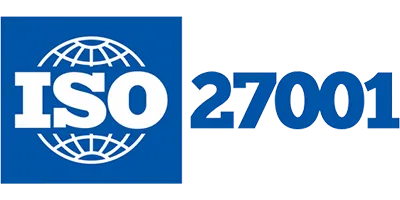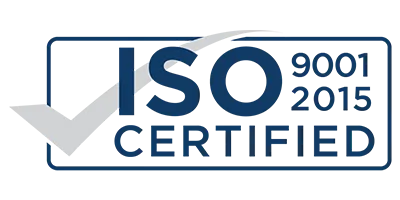Salesforce integration services bring humongous growth opportunities for businesses that have adopted this cloud CRM. Listed as one of the trusted & biggest CRMs in the world with more than 1,50,000 users, Salesforce CRM is not just a luxury but a necessity to gain accurate sales forecasting.
Achieving accurate sales forecasting is a challenge for the sales team, if they don’t have the right set of tools. Here comes Salesforce forecasting for sales teams’ aid.
The Salesforce forecasting tool enables sales teams to get a holistic view of every sales opportunity, help them plan their sales pipeline and acquire better sales forecasting.
Salesforce Sales Forecasting – A Tool to Enhance Accuracy in Forecasting
Do you know that Salesforce has a dedicated tool that helps sales reps get a clear view of upcoming sales opportunities?
Its’ name is Salesforce Forecasting. As evident in its name, the tool helps businesses understand data and delivers reliable and precise sales performance estimates.
It empowers sales agents to analyze current opportunities, measure sales against quotas, and train sales reps to work efficiently. Integration of Sales Cloud into the process allows companies to make adjustments in opportunities as they move through the sale cycle.
What is Salesforce Forecasting?
Accuracy in sales & opportunity forecasting is imperative, and it can be done via myriad methods such as qualitative techniques, time series analysis, causal models, historical forecasting, pipeline forecasting, intuitive forecasting, and more. However, Salesforce CRM also has a dedicated tool that empowers sales reps with accurate sales representatives.
The tool comes with multiple powers. It provides a holistic view of every opportunity across your company. It gives you an idea of when a deal will get closed and how much time it will take to close the deal.
It has multiple in-built categories, and based on these categories, the tool offers you a detailed forecasting report.
Who Can Take Benefits from Salesforce Forecasting?
The tool Salesforce Forecasting brings a plethora of features and it empowers different stakeholders working in the sales department.
Let’s understand the importance of the sales forecasting tool for different people –
Salesforce Forecasting for Sales Reps
For sales representatives, Salesforce Forecasting can be a game-changer. It simplifies the reporting process by providing a clear overview of your sales pipeline. Instead of spending countless hours compiling data for your manager, you can focus on what truly matters – closing deals.
Imagine a scenario where you missed your quarterly quota due to unexpected customer delays. With Salesforce Forecasting, you can easily demonstrate the real-time status of your pipeline, providing concrete evidence for the challenges you face. This transparency builds trust with your manager and alleviates unnecessary pressure.
Salesforce Forecasting for Investors
For investors and board members, Salesforce Forecasting offers invaluable insights into the company’s overall performance. By providing a clear picture of the sales pipeline, the tool helps stakeholders assess the company’s progress toward its financial goals.
With Salesforce Forecasting, investors can gain confidence in the company’s ability to meet its targets. The ability to drill down to the individual opportunity level facilitates thorough due diligence, allowing investors to make informed decisions about their investments.
Salesforce Forecasting for Managers
Sales managers wear many hats, and accurate forecasting is essential for driving overall sales performance. Salesforce Forecasting offers a bird’s-eye view of the sales landscape, enabling managers to identify trends, spot potential issues, and make data-driven decisions.
By leveraging the tool, managers can assess team performance, allocate resources effectively, and set realistic targets. When sales numbers deviate from expectations, Salesforce Forecasting provides the necessary insights to understand the underlying causes and takes corrective actions.
Ultimately, Salesforce Forecasting empowers both sales representatives and managers to work more efficiently, make informed decisions, and drive sales growth.
Improve Salesforce Forecasting – 7 Steps to Strong Sales Growth
- Understand Your Requirement
When we say requirements we mean that you build a strong understanding around your forecasting needs.
Do you want to forecast revenue, profit margin, or something customized? Analyze your requirements and accordingly clean your data. Salesforce has multiple models for forecasting, you can either use pre-built models or you can create custom forecasts based on your requirements.
- To Set Accountability & Hierarchy
Set accountability for sales forecasting and assign the duty to a member of your sales team. The assigned person will work as a voice of the sales team for your company. Salesforce has a limitation when it comes to setting managers for forecasting managers. Therefore it is essential to create the right hierarchy, which can be done by region, custom role, or by roles.
For successful accountability, you need to build the right routines that ensure your team is on the right track when it comes to predicting sales.
- Simplify Your Probability
Sales forecasting is essentially multiplying opportunity probability by deal size. While simplistic, this underpins the process.
Accurate forecasting hinges on historical data. Analyze past performance to determine closing probabilities for each sales stage.
General rules of thumb suggest lower probabilities early in the pipeline and higher ones closer to closing. However, these are guidelines, not absolutes. Without historical data, estimate probabilities and refine over time.
- Aligning Sales Stages with Forecast Categories
This ensures clarity and accuracy. Use categories like Pipeline, Best Case, Most Likely, Commit, Closed, and Omitted. This structure provides a clear view of opportunity stages and potential outcomes for everyone in the organization.
- Understanding the Forecast Summary
In terms of Salesforce Forecasting, summary means roll-up. It is essential for sales reps to manipulate settings and comprehend report outputs.
In general, there are two types of rollups: first is a single forecast wherein opportunities are being rolled up from one category. The second type is cumulative forecast, wherein the sales team can get roll ups from the chosen forecast categories.
- Set the Bar: Incorporate Sales Quotas into Forecasts
Adding sales quotas to your forecasts provides a clear benchmark for performance. This simple addition allows for quick comparisons of actual sales against targets, driving better decision-making and strategic planning.
- Leverage Einstein for Enhanced Forecasting
Salesforce Einstein AI can significantly enhance your forecasting accuracy. By analyzing vast amounts of data, including historical performance, opportunity details, account information, and related records, Einstein provides insights that would take human analysts months to uncover. This powerful tool can be a game-changer for your forecasting process.
Empower Your Salesforce Forecasting with FEXLE
Accurate sales forecasting is pivotal for business growth. By following these tips and leveraging the power of Salesforce Forecasting, businesses can significantly enhance their sales prediction accuracy.
FEXLE, as a trusted Salesforce support services partner, offers comprehensive Salesforce integration services to optimize your CRM for effective forecasting. Contact us to unlock the full potential of Salesforce Forecasting for your business.







